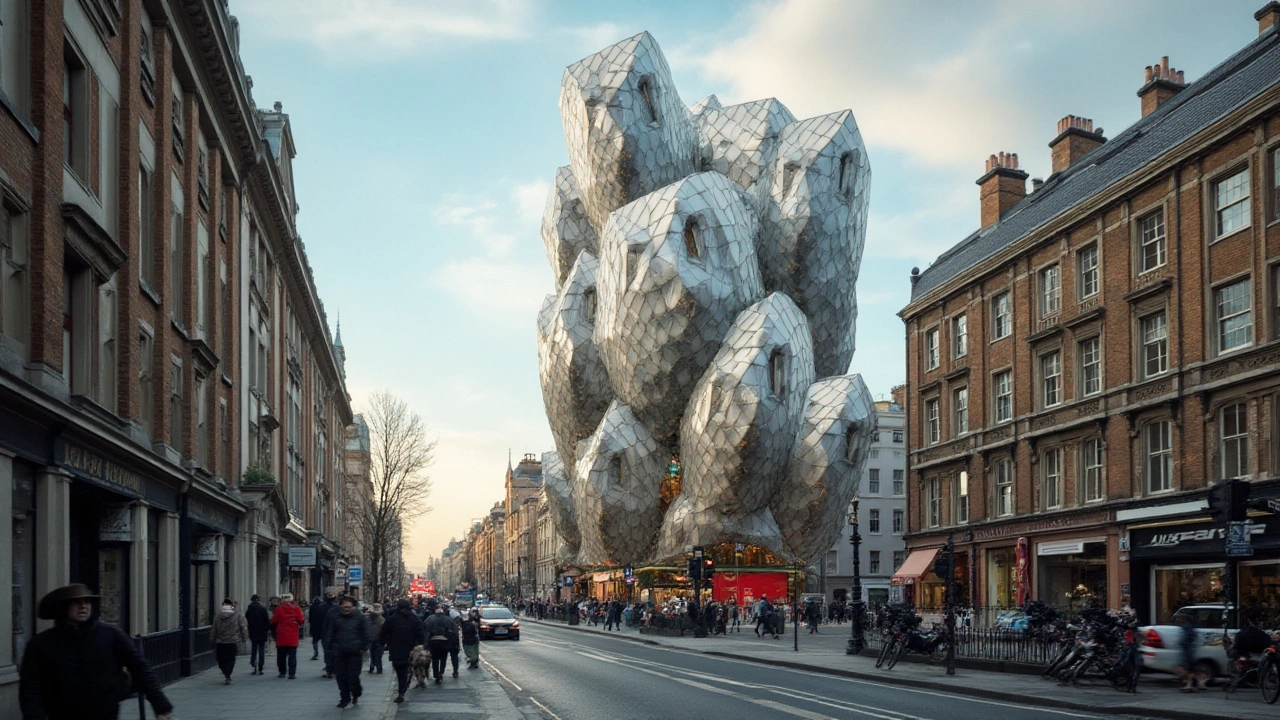Deconstructivism challenges conventional design with its avant-garde approach, dispelling the norms of uniformity and order. This movement, rooted in architectural innovation, transforms traditional structures by emphasizing elements like fragmentation and irregularity. With influential figures such as Frank Gehry leading the charge, deconstructivism has redefined spaces from buildings to urban environments. By exploring this design philosophy, observers can gain insights into the creativity and risk-taking that drives this transformative art form.
Deconstructivism: How to Spot and Use Its Bold Moves
Deconstructivism looks like buildings pulled apart and reassembled without rules. At first glance it feels chaotic. Look closer and you’ll see deliberate choices: broken planes, sharp angles, and unexpected curves. This page gives you quick, usable tips to recognize the style, why architects use it, and small ways to borrow its energy for your projects.
Key features and easy identification tips
Want to know if a building is deconstructivist? Check these features: fragmented shapes instead of neat boxes, tilted or intersecting walls, exposed structure or seams, and mixed materials — metal, glass, concrete all in one composition. Surfaces often twist or fold; roofs rarely look flat. Colors may be muted or metallic, so focus on form more than paint.
Spot famous examples: Frank Gehry’s Guggenheim Bilbao uses flowing metal curves. Zaha Hadid’s early work shows sharp diagonals and slicing volumes. Daniel Libeskind’s Jewish Museum in Berlin has jagged forms that create dramatic interior spaces. If a building feels like it’s challenging how architecture normally sits on the ground, it’s likely deconstructivist.
Why architects choose this look — and how to use it practically
Architects pick deconstructivism to provoke feeling and tell a story with shape. It breaks rules to create movement, surprise, or to reflect complex histories and ideas. For clients, it can make a strong public identity. For cities, it can become a landmark people remember.
If you want to borrow elements for a smaller project, don’t copy the chaos. Try one or two moves: offset a roofline, introduce a slanted wall, or pair a dramatic metal panel with calm brick. Use contrast — rough concrete next to smooth glass — to get that deconstructivist punch without losing function or budget.
For interiors, think about flow. Deconstructivist spaces often guide you through unusual sightlines. Create a simple version by using angled partitions, varied ceiling heights, or a stair that becomes a visual focal point. Keep practical needs in mind: natural light, circulation, and furniture fit should not be sacrificed for effect.
Photographers and students: look for shadows and reflections. Deconstructivist forms cast sharp, changing shadows that make great photos at sunrise or sunset. Walk around the building — shots from close up and wide angles tell very different stories.
Want broader context? Deconstructivism sits alongside movements like postmodernism, expressionism, neo-futurism and high-tech architecture. Read those styles to see what deconstructivism reacts to and borrows from. On this site you’ll find pieces on postmodern, neo-futurism, expressionist, and high-tech that make those links clear.
Final tip: respect structure. Bold form is powerful, but success comes from balancing drama with engineering and real-world needs. A well-done deconstructivist idea looks bold and still works as a building.
Deconstructivism challenges traditional design norms by embracing asymmetry and fragmentation, leading to innovative spaces that defy conventional aesthetics. This approach has been instrumental in transforming environments, pushing the boundaries of what architecture can convey. Through its unique way of juxtaposing elements, Deconstructivism creates dynamic spaces full of tension and excitement. The article explores its principles, historical roots, and practical impacts on contemporary spaces.


